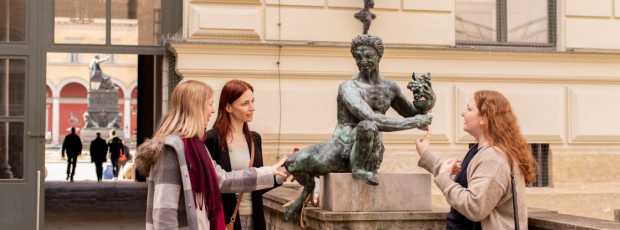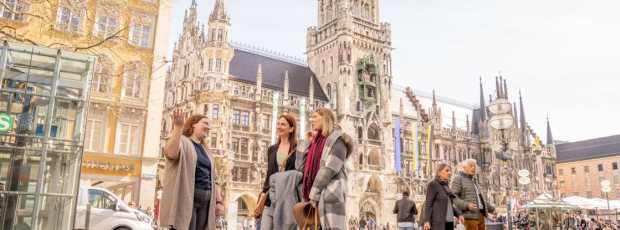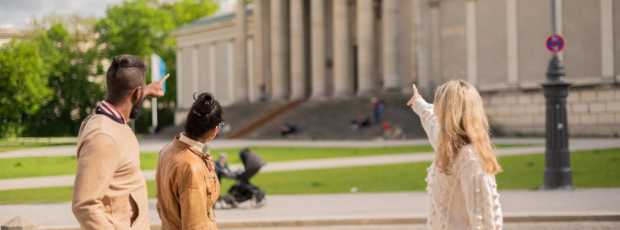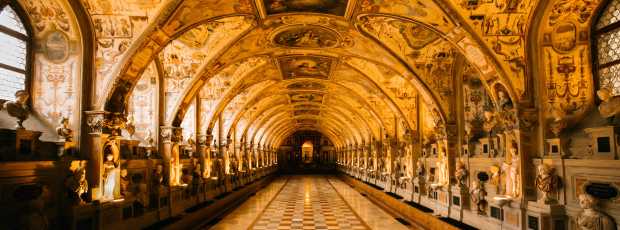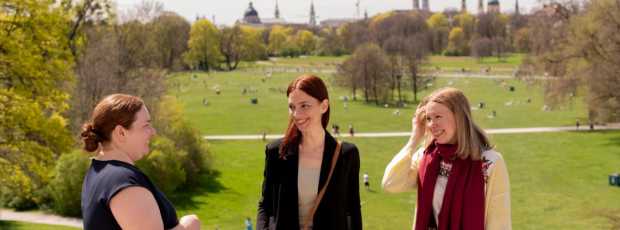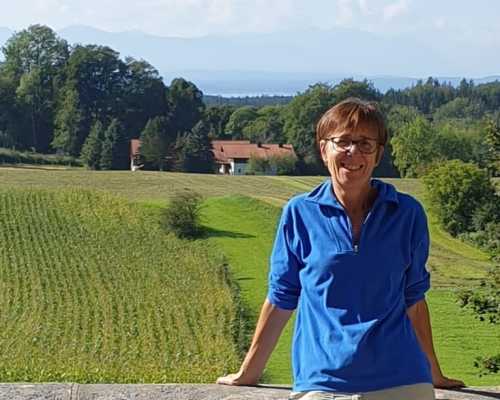See Munich’s hidden side on a private tour
Private tours, designed around you
Table Of Contents
- You Haven't Really Done Munich Without My Best Neighborhoods
- What Are the Most Iconic Neighborhoods in Munich?
- Where Are Munich's Creative and Emerging Districts?
- Which Munich Neighborhoods Are Best for Food and Markets?
- Where Should Families Stay in Munich?
- Where Is Munich's Nightlife and Youth Culture?
- What Are the Most Overrated Parts of Munich (and What Should I Do Instead)?
- How Do I Get Around Munich's Neighborhoods?
- How Safe Is Munich for Visitors?
- Frequently Asked Questions
- Final Thoughts: How to Navigate Munich's Neighborhoods

Aerial view of Munich's neighborhoods with Isar River cutting through
That's fine. But if you want to understand how this city actually works, you need to think less about landmarks and more about rhythms. Munich experiences and neighborhoods make sense when you map them by rivers, parks, and beer gardens, not by tour bus routes.
The Isar River cuts through the eastern half, creating a green corridor where locals bike, jog, and drink Augustiner on gravel banks. The Englischer Garten anchors the north. Beer gardens aren't bars. They're public living rooms where families spread blankets and office workers decompress after 5 PM.
The U-Bahn spokes radiate from the center, and once you understand which line takes you where, the best neighborhoods in Munich stop feeling scattered and start feeling connected.
As a City Unscripted host, I plan days by U-Bahn lines and river pockets, not by postcard stops.
I'm not here to romanticize cobblestones or pretend every corner sparkles. Some areas are overrun. Some are dull.
Some are perfect if you know when to show up. This guide gives you the real map, the one locals use when we're deciding where to meet for coffee or which market to hit on a Tuesday morning. For more comprehensive coverage of things to do in Munich, we've got that covered too.

Wiener Platz market square with small shops and morning shoppers
You Haven't Really Done Munich Without My Best Neighborhoods
These three areas aren't optional. They define Munich's character, and skipping them means you've missed the plot entirely.
How I Actually Do It (Local Rhythm)
Tuesday: Standl 20 at 8:15 for coffee, U2 to Königsplatz for Lenbachhaus (10:00 for an hour), Seehaus at 17:00 for a lake-side beer garden session.
Sunday: Café Frischhut at 9:00, Isar stroll via Gärtnerplatz at dusk, early dumplings at Wirtshaus in der Au (book for 17:30).
Season pivots: Spring brings Maibock in beer gardens and Spargelzeit (white asparagus season, April through June). Summer evenings stretch long on the Isar banks. Winter brings Christkindlmarkt stalls throughout the Altstadt and tower views under cold, clear skies.
Altstadt-Lehel: The Historic Core That Still Functions
Altstadt-Lehel is the old town, the city center, the postcard zone. Marienplatz, Viktualienmarkt, Frauenkirche, all the heavy hitters sit here. Tourists flood it, locals tolerate it, and if you time it wrong you'll spend your morning elbowing through selfie sticks.
Here's what works: show up early. Viktualienmarkt opens at 8 AM on weekdays, and the first hour is when actual Munichers buy their produce. By 11 AM it's a circus. Climb Alter Peter tower before 10 AM and you'll have breathing room at the top. The view covers the whole city center and on clear days you can see the Alps strung across the southern horizon.
For food, skip the tourist traps ringing Marienplatz. Walk five minutes south to Café Frischhut (locals call it Schmalznudel) and get a fresh Schmalzgebäck with coffee.
It's been there since 1973, and the line moves fast. For a proper Bavarian breakfast, Zum Franziskaner near Marienplatz does excellent Weißwurst with pretzels before noon. If you're staying central, understand that you're paying for walking distance to everything, but you're also living where cruise groups congregate. It's a trade-off.
The U-Bahn and S-Bahn converge at Marienplatz station, so public transport access is flawless. You can reach any neighborhood in Munich from here in under 20 minutes.
Glockenbach and Gärtnerplatz: Where Munich Actually Hangs Out
Glockenbach is located south of the city center along the Isar River. Glockenbach and Gärtnerplatz form Munich's creative, slightly scruffy, LGBTQ-friendly heart. The Isar River borders it to the east, and on summer evenings the Wittelsbacherbrücke fills with people drinking beers bought from corner shops. It's legal, it's cheap, and it's how locals do sunset.
Gärtnerplatz itself is a small circular plaza with a fountain. By 7 PM on warm nights it's packed with cyclists, cafe spillover, and groups lounging on the steps. It's not dramatic, but it's real. The bars here lean toward cocktails and wine rather than beer halls. Zephyr is a solid late-night spot, and Bergwolf serves Turkish-German fusion until 2 AM when you need carbs.
The neighborhood runs affordable by central Munich standards, though that bar keeps rising. You'll find independent shops, design studios, and cafes that don't feel like chains. If you're staying here, you're a short walk to the old town but you're sleeping where people actually live. The U-Bahn stops at Fraunhoferstraße and Sendlinger Tor put you two stops from Marienplatz.
Au-Haidhausen and the French Quarter: Neighborhood Life Without the Shine
Cross the Isar east and you hit Au-Haidhausen, a residential stretch that feels more lived-in than polished. The nickname "French Quarter" refers to the streets around Wiener Platz (Pariser Platz, Bordeauxplatz), named after French cities. It's a micro-village setup: small market square, corner bakeries, wirtshaus pubs serving schnitzel and dumplings.
Wiener Platz market runs six days a week (closed Sundays). It's smaller and scrappier than Viktualienmarkt, but that's the point. You're buying vegetables next to a grandmother who's been shopping here for forty years. Wirtshaus in der Au sits on the square and does excellent dumplings (Knödel) in broth. It's traditional Bavarian food done properly, no tourist markup.
The Deutsches Museum is located south in this district, and if you care about science or engineering it's worth the time. Families love this neighborhood because it offers affordable housing relative to the center, green spaces along the Isar, and a slower pace. The U-Bahn line U1/U2 stops at Kolumbusplatz and Silberhornstraße, and you're ten minutes to the city center by public transport.

Surfers at Eisbachwelle in Englischer Garten, crowd watching from bridge
What Are the Most Iconic Neighborhoods in Munich?
These are the districts that define Munich's reputation, the ones visitors expect and locals depend on. Each has a reason for existing beyond tourism. If you're exploring Munich's best neighborhoods across the city, these form the core.
Maxvorstadt: Students, Museums, and Functional Bohemia
Maxvorstadt is located north of the city center and houses Ludwig-Maximilians-Universität, Munich's largest university. That means cheap eats, used bookstores, and a younger population that can't afford Schwabing rents. The museum quarter clusters here too: Pinakotheken, Lenbachhaus (home to the Blue Rider collection), and Königsplatz.
If you're into art galleries, the Lenbachhaus is the move. It's compact, well-curated, and not overwhelming like some of the bigger institutions. Entry typically runs €10-15 or check their website for current pricing. Thursdays it stays open until 8 PM, which works well after a workday.
For food, this is student territory. You'll find Turkish doner shops, Vietnamese banh mi spots, and cheap Italian trattorias. It's not fine dining but it's real and it's affordable. If you're staying here, you're a short walk to the Englischer Garten's southern entrance and the U-Bahn lines U2 and U8 connect you to everything.
The neighborhood is located north of the central station and west of the old town. Walking distance to Altstadt is about fifteen minutes. Young professionals and students cluster here because it balances central access with (relatively) sane rent prices.
Schwabing: The Bohemian Quarter That Gentrified (But Kept Some Edge)
Schwabing is located northeast of the city center and used to be Munich's artistic heart in the early 20th century. Kandinsky lived here, cafes hosted writers, and rents were low. Now it's expensive, but it still has better bones than most neighborhoods. Elisabethmarkt, located near Elisabethplatz, is a daily market where locals shop for bread, cheese, fish, and vegetables. It's functional, not touristy, and surrounded by good bakeries and wine shops.
Standl 20 is a coffee trailer at Elisabethmarkt that opens early and does excellent espresso. Grab a cup and walk through the stalls. That's how mornings work here.
Leopoldstraße is the main artery running north through Schwabing. It's loud, busy, and lined with cafes that charge too much. The side streets east toward the Englischer Garten are quieter and more pleasant. If you're staying in Schwabing, you're near green spaces, good public transport (U3/U6 lines), and easy access to both the city center and the northern suburbs.
Families like Schwabing because it offers parks, decent schools, and proximity to the English Garden without the tourist density of the old town. Rents are high, but so is the quality of life.
Neuhausen-Nymphenburg: Family Territory Near the Palace
Neuhausen-Nymphenburg sits west of the city center and wraps around Nymphenburg Palace, Munich's Versailles equivalent. The palace grounds are massive, free to walk, and full of families on weekends. Swans, canals, formal gardens, the works.
Hirschgarten is located here, and it's Munich's largest beer garden. Eight thousand seats under chestnut trees, family-friendly, and you can bring your own food (just buy the beer). On Sundays in summer, half of Munich shows up with picnic baskets. It's loud, casual, and exactly what beer garden culture should be. Grab a Steckerlfisch (grilled fish on a stick) from the stands if you don't want to pack your own meal. This is where families spend entire afternoons, and it's one of the few genuinely stress-free places in the city.
The neighborhood itself is residential, quiet, and offers affordable housing compared to districts closer to the center. The U-Bahn line U1 runs through it, and you're fifteen minutes to Marienplatz. If you're staying here with kids, you've made the right call. If you're solo and want nightlife, you've picked wrong.
Englischer Garten Fringe: Parks, Surfing, and Green Space
The Englischer Garten is one of the largest urban parks in the world, bigger than Central Park. It runs from the northern edge of the old town all the way to the suburb of Freimann. The southern entrance near the university is where the famous Eisbachwelle sits, a standing wave where surfers practice year-round. Yes, surfing in Munich. It's absurd and it works. (Conditions vary, so check current status before you go.)
Seehaus beer garden sits on the Kleinhesseloher See (a small lake inside the park) and offers table service if you're willing to pay more, or bring-your-own-food zones if you're not. It's beautiful, it's popular, and on weekends it's packed. Weekday afternoons around 4 PM are the sweet spot.
You don't "stay" in the Englischer Garten (it's a park), but neighborhoods bordering it like Schwabing and Lehel benefit from easy access. If green spaces matter to you, proximity to the garden is a real quality-of-life boost.
Looking for a private city experience in Munich?
Explore the city with a local who plans a private day just for you; no groups, no scripts.

Residential street in Sendling with apartment buildings and local corner shops
Where Are Munich's Creative and Emerging Districts?
These neighborhoods aren't polished. They're where immigrants opened restaurants, breweries stayed local, and rents (used to) stay manageable. You won't find them on most tourist maps, but they're among Munich's real hidden gems.
Westend: Working-Class Roots and Actual Breweries
Westend is located southwest of the city center, bordered by industrial zones and train tracks. It's historically a working-class, immigrant neighborhood, and it still feels like that in pockets. Augustiner Bräustuben, one of Munich's best traditional beer halls, is located here on Landsberger Straße. It's massive, it's loud, and the beer comes straight from wooden barrels. Locals drink here, not tour groups.
The neighborhood is gentrifying slowly, but it hasn't flipped yet. You'll find Turkish bakeries, Greek tavernas, and Vietnamese pho shops next to Bavarian pubs. It's a real mix. Public transport access is decent (U4/U5 lines, S-Bahn at Heimeranplatz), and you can reach the city center in under fifteen minutes.
If you're staying in Westend, you're saving money and you're living where Munich's working-class heritage still shows. It's not pretty, but it's honest.
Sendling: Immigrant Kitchens and Fewer Tourists
Sendling is located south of the old town, just past the city center. Sendlinger Tor sits just north of Sendling, in the Altstadt/Isarvorstadt area. The neighborhood itself is residential, affordable (by Munich standards), and home to a lot of immigrant-run restaurants. Türkitch on Dreimühlenstraße does excellent Turkish-German fusion, open late, and the doner is legitimately good.
There's not much tourist infrastructure here, which is the point. If you're staying in Sendling, you're close enough to walk to the center (twenty minutes) but you're sleeping in a neighborhood where people actually live. Rents offer affordable housing compared to Altstadt or Schwabing, and the U-Bahn lines U3 and U6 run through Sendling (e.g., Implerstraße, Harras); U1/U2 do not. This gives you easy access to the rest of Munich.
Sendling doesn't have a defining landmark or a beer garden everyone knows. It's just a functional, lived-in district that works for people who want to save money and avoid tourist crowds.

Outdoor cafe seating on Schwabing side street
Which Munich Neighborhoods Are Best for Food and Markets?
Munich's food culture splits between beer gardens, traditional wirtshaus pubs, and immigrant kitchens. The best neighborhoods balance all three. For a deeper dive into what to eat across the city, we've covered that separately.
Au-Haidhausen: Wirtshaus Culture and Wiener Platz Market
I covered Au-Haidhausen earlier, but it deserves emphasis here because the food scene is the whole point. Wirtshaus in der Au on Wiener Platz does dumplings (Knödel) in broth, pork roast with crackling, and sauerkraut that doesn't taste like it came from a jar. It's traditional Bavarian cooking done properly, and the portions are massive. Try the Obatzda (spiced cheese spread) with pretzels as a starter.
The Wiener Platz market runs Monday through Saturday. It's small, functional, and locals shop here for vegetables, flowers, and bread. You're not going to find artisan truffle oil or Instagram-worthy smoothie bowls. You're going to find a grandmother buying potatoes. That's the vibe. Grab a Leberkäse-Semmel (meat loaf sandwich) from one of the butcher stalls for a proper Munich snack.
The neighborhood is located east of the city center, across the Isar. The Deutsches Museum sits at the southern edge, so you can combine a museum visit with lunch in the French Quarter. U-Bahn access at Kolumbusplatz makes it an easy trip.
Schwabing: Elisabethmarkt and Bakery Culture
Schwabing's Elisabethmarkt is Munich's second-best daily market after Viktualienmarkt, and it's far less touristy. You'll find fish counters, cheese vendors, flower stalls, and seasonal produce. The market is surrounded by bakeries, cafes, and wine shops that spill onto the sidewalks.
Standl 20 is the coffee trailer at the market entrance. Show up between 8 and 9 AM, order an espresso, and watch the market wake up. That's the morning routine here.
For restaurants, Schwabing leans toward cafes and bistros rather than traditional beer halls. You'll find Italian trattorias, Greek mezze spots, and Thai noodle shops along Hohenzollernstraße and the side streets branching off Leopoldstraße. It's not cheap, but the quality is solid. For cake and coffee, Café Luitpold does an excellent Prinzregententorte (layered chocolate cake), and it's been a Munich institution since 1888.
The U3 and U6 lines stop at Münchner Freiheit and Giselastraße, putting you ten minutes from the city center. Families and young professionals both cluster here because it offers good schools, parks, and easy access to restaurants and shops.

Family walking through Altstadt with stroller
Where Should Families Stay in Munich?
Families need green spaces, stroller-friendly infrastructure, and neighborhoods that don't revolve around nightlife. Munich offers several options that work.
Neuhausen-Nymphenburg: Beer Gardens and Palace Grounds
I mentioned this earlier, but Neuhausen-Nymphenburg is the family neighborhood. Hirschgarten beer garden is stroller-friendly, has playgrounds, and welcomes kids. The Nymphenburg Palace grounds offer acres of walking paths, canals, and open lawns where children can run without bothering anyone.
The neighborhood itself is quiet, residential, and offers affordable housing compared to central districts. Restaurants lean toward traditional Bavarian and family-run Italian spots. Nightlife is minimal, which is exactly what families want.
The U1 line connects you to the city center in fifteen minutes, and there's ample parking if you're driving. If you're visiting Munich with children, this is the neighborhood that makes the most sense.
Englischer Garten Access: Lehel and Schwabing Edges
Neighborhoods bordering the Englischer Garten give families easy access to one of Europe's largest urban parks. Lehel sits on the southern edge, and Schwabing borders the western side. Both offer walking distance to playgrounds, bike paths, and the Kleinhesseloher See lake inside the park.
Lehel is more expensive but quieter. Schwabing has more infrastructure (shops, cafes, schools) but higher foot traffic. Either way, proximity to the Englischer Garten means you have a massive backyard where kids can bike, play, and exhaust themselves before bedtime.
Public transport access is excellent in both areas. The U-Bahn lines U4 and U5 serve Lehel, while U3 and U6 cover Schwabing. You're never more than a short walk to a station.
Altstadt-Lehel for Central Convenience
If you want walking distance to everything and you're willing to pay for it, Altstadt-Lehel works for families. You're steps from Viktualienmarkt, the toy museum, and major landmarks. The Isar River runs along the eastern edge, offering green space without leaving the city center.
The trade-off is noise, crowds, and higher prices. Hotels and vacation rentals here charge premium rates because you're in the old town. But if your trip is short and you want stress-free access to Munich's main attractions, central stays make sense.
What if your day in Munich was planned by someone who knows it — and you?
City Unscripted matches you with a local host who creates a private experience based on your interests, not a set route.
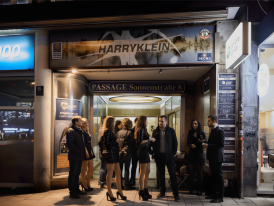
Entrance to Harry Klein club at night with line of people waiting outside
Where Is Munich's Nightlife and Youth Culture?
Munich's nightlife isn't Berlin. It's smaller, quieter, and ends earlier. But pockets exist where young professionals, students, and night owls congregate. For more on things to do at night, we've detailed the full scene.
Glockenbach and Gärtnerplatz: Bars, Cocktails, and Late-Night Food
Glockenbach is Munich's nightlife hub. Bars like Zephyr, Niederlassung, and NY Club draw crowds that skew young, creative, and LGBTQ-friendly. The scene leans more toward cocktails and wine rather than beer halls. Bergwolf stays open past midnight and serves Turkish-German fusion food when you need something substantial after drinks.
The neighborhood is located south of the city center, bordered by the Isar River to the east. Walking distance to Sendlinger Tor and Marienplatz means you can stumble home or catch the last U-Bahn without stress. Public transportation runs until around 1 AM on weekdays, longer on weekends.
Glockenbach attracts young professionals who want nightlife without committing to full-on club culture. It's casual, walkable, and the bars don't feel like they're trying too hard.
Altstadt Clubs and Sendlinger Tor Radius
The old town and the blocks around Sendlinger Tor hold most of Munich's actual clubs. Venues like Harry Klein, Rote Sonne, and Blitz Club host electronic music nights and draw crowds that stay until 4 or 5 AM. For more mainstream dance music, Pacha near the Hauptbahnhof pulls in larger crowds. It's not a massive scene, but it exists.
Cover charges typically run €10-20 depending on the night and venue. Dress codes aren't strict, but showing up in full Lederhosen or tourist gear will get you judged. Public transport access is easy (everything converges at Sendlinger Tor and Marienplatz), and night buses run after the U-Bahn stops.
If you're here for clubbing, understand that Munich's scene is modest by German standards. Berlin has more venues, longer hours, and looser energy. Munich's clubs are fun, but they're not the reason most people visit.

Auer Dult festival with carousel and small crowds
What Are the Most Overrated Parts of Munich (and What Should I Do Instead)?
Every city has tourist traps. Munich's are obvious, but they're hard to avoid entirely. Here's how to manage them.
Hofbräuhaus: Go Once, Then Move On
Hofbräuhaus is Munich's most famous beer hall. It's massive, loud, and full of tourists taking photos of their liter mugs. The beer is fine. The food is mediocre. The whole experience feels like a performance of Bavarian culture rather than the real thing.
Go once if you must. Take your photo. Drink your beer. Then head to Augustiner Bräustuben in Neuhausen or Wirtshaus in der Au in Haidhausen for the real version. Both serve better food, better beer, and attract locals who aren't performing for cameras.
Viktualienmarkt at Peak Hours: Come Early or Skip It
Viktualienmarkt is a legitimate market where locals shop, but between 11 AM and 2 PM it's a shoulder-to-shoulder scrum of tour groups and selfie sticks. The stalls are genuine, the produce is good, and the atmosphere is real. But timing matters.
Show up at 8 AM when the market opens, or go late afternoon around 4 PM when the crowds thin. If you miss the window, head to Elisabethmarkt in Schwabing or Wiener Platz in Haidhausen instead. Both are smaller, calmer, and just as authentic.
Oktoberfest Every Weekend: Try Auer Dult or Frühlingsfest
Some visitors treat every beer garden like a mini-Oktoberfest. Oktoberfest is huge, chaotic, and happens once a year in late September. The rest of the time, beer gardens are family spaces where people bring picnic baskets and drink in peace.
If you want festival atmosphere without the October insanity, check the calendar for Auer Dult (three times a year near Mariahilfplatz) or Frühlingsfest (spring festival on the Oktoberfest grounds). Both offer rides, beer tents, and crowds, but they're smaller and less overwhelming.
And if you're visiting in summer, just go to Hirschgarten or Seehaus and enjoy the regular beer garden experience. It's better than chasing festival vibes year-round.

U-Bahn station platform with arriving train
How Do I Get Around Munich's Neighborhoods?
Munich's public transport system is efficient, punctual, and covers every neighborhood mentioned in this guide. Understanding the basics saves time and money.
U-Bahn and S-Bahn: Your Primary Tools
The U-Bahn (subway) runs six main lines (U1 through U6) that connect the city center to outer neighborhoods. The S-Bahn (commuter rail) handles longer distances, including airport access and trips to suburbs. Both systems intersect at major hubs like Marienplatz, Hauptbahnhof (main station), and Sendlinger Tor. Understanding Munich's districts and how they connect via these transit lines makes navigation straightforward.
A single ticket typically costs €3-4 and is valid for three hours in one direction. Day passes are around €7-9 and make sense if you're taking more than three trips. Check MVG for current pricing. Buy tickets at machines in every station or via the MVG app. Validate them at the blue stamping machines before boarding, or you'll risk a fine from roving inspectors.
The U-Bahn runs roughly 4 AM to 1 AM on weekdays, with extended hours on weekends. Trains come every five to ten minutes during the day, longer at night. It's reliable, clean, and the fastest way to move across Munich.
Walking Distance and Biking Culture
Munich is compact. Walking distance from Marienplatz to Glockenbach is fifteen minutes. Marienplatz to Schwabing is twenty-five minutes. Most neighborhoods within the city center cluster within a short walk of each other, and the infrastructure is pedestrian-friendly.
Biking is massive here. Munich has protected bike lanes throughout the city, and you'll see everyone from students to grandmothers cycling. Rental bikes are available via apps like Call a Bike or Lime, or you can rent traditional bikes from shops near the Hauptbahnhof. If you're staying more than a few days, biking is the best way to move between neighborhoods and explore the Isar River paths.
Getting from the Airport
Munich Airport (Franz Josef Strauss) sits about forty kilometers north of the city center. The S-Bahn lines S1 and S8 connect the airport to downtown Munich. The trip takes about forty minutes and costs the same as a regular public transport ticket with airport zone addition (check MVG for current pricing).
Trains run every twenty minutes throughout the day. If you're arriving late or carrying heavy luggage, taxis and rideshares are available but typically cost €60-80 to the city center. The S-Bahn is cheaper and almost as fast unless you're traveling after midnight when service thins. The same S-Bahn network makes day trips to surrounding regions straightforward.
Accessibility and Stroller-Friendly Routes
Most U-Bahn stations have elevators, though older stops like Marienplatz can be tricky with strollers. Sendlinger Tor and Marienplatz both have elevators, but check live status in the MVG app before planning your route. Beer gardens are universally stroller-friendly with wide gravel paths. You can park strollers on the gravel between tables without blocking walkways.
The Isar River paths are flat, paved, and perfect for strollers or wheelchairs. Parks like the Englischer Garten and Nymphenburg Palace grounds offer smooth surfaces and gentle slopes. If accessibility is a concern, Munich is generally well-equipped, though some historic areas in the old town have cobblestones and stairs.
Tip
We match you with the right host, not just any guide.Want to experience the real Munich with someone who lives there?
A fully private experience, planned and led by a local host who tailors the day to you

Well-lit pedestrian street in Altstadt at night with people walking
How Safe Is Munich for Visitors?
Munich is one of Europe's safest cities. Violent crime is rare, and most visitors never encounter problems beyond the occasional pickpocket.
Practical Safety Notes
Petty theft happens in crowded tourist zones like Marienplatz, Oktoberfest, and busy U-Bahn stations. Keep your phone, wallet, and passport secure, and don't leave bags unattended. That's standard big-city advice, not a Munich-specific warning.
Late-night Isar River banks can get rowdy on summer weekends when large groups drink until dawn. It's loud but not dangerous. If you want a quieter evening, stick to beer gardens or residential neighborhoods after dark.
Healthcare facilities are excellent. Munich has multiple hospitals, and pharmacies (Apotheke) are common throughout the city. If you need urgent care, the Klinikum Rechts der Isar and Ludwig-Maximilians-Universität Klinikum are centrally located. EU visitors should bring their European Health Insurance Card. Others should have travel insurance.
Where to Avoid (Or Just Manage)
Munich doesn't have dangerous neighborhoods in the way some cities do. Even Westend and Sendling, which are working-class and less polished, are safe to walk through day or night.
The main station (Hauptbahnhof) area can feel sketchy late at night, with a mix of homeless populations and people dealing with addiction. It's not violent, but it's uncomfortable for some travelers. Walk through with purpose, don't stop to engage with strangers offering "help," and you'll be fine.
If you're traveling solo, Munich's neighborhoods are all accessible. Women report feeling safe walking alone at night in most districts, though the usual precautions apply (stick to lit streets, trust your instincts, don't overdrink in unfamiliar areas).
Frequently Asked Questions
1. What is the nicest neighborhood in Munich?
"Nicest" depends on what you value. Schwabing offers tree-lined streets, good cafes, and proximity to the Englischer Garten, but it's expensive. Neuhausen-Nymphenburg is quieter, family-friendly, and has Hirschgarten beer garden plus the palace grounds. Glockenbach is creative, walkable, and borders the Isar River. All three work, but for different reasons. If I had to pick one, I'd say Glockenbach balances charm, central access, and real neighborhood energy without feeling sanitized.
2. What is the best area to stay in Munich for tourists?
Altstadt-Lehel puts you in walking distance of Marienplatz, Viktualienmarkt, and major landmarks. Public transport from here reaches every neighborhood in under twenty minutes. The trade-off is crowds and higher prices. If you want central convenience and don't mind tourist density, this is the move. For a quieter option with easy U-Bahn access, try Maxvorstadt or Schwabing.
3. Are Munich's neighborhoods expensive?
Yes, but some are worse than others. The city center (Altstadt-Lehel) charges premium rates for hotels and vacation rentals. Schwabing and Lehel are also pricey. Maxvorstadt, Sendling, and Westend offer affordable housing and cheaper accommodation options. Beer gardens and bring-your-own-food culture help you save money on meals. Parks and green spaces are free. You can keep costs down if you avoid the tourist center and eat where locals eat.
4. Which Munich neighborhoods are best for young professionals?
Maxvorstadt attracts students and young professionals because rents are (relatively) affordable and the location is central. Glockenbach and Gärtnerplatz offer nightlife, cafes, and walkability. Schwabing has more polish and higher prices but also better infrastructure. If you're moving to Munich for work, those three neighborhoods make the most sense for balancing social life, commute times, and housing costs.
5. Where should families with children stay in Munich?
Neuhausen-Nymphenburg is the top family neighborhood. Hirschgarten beer garden is stroller-friendly, the palace grounds offer open space, and the residential streets are quiet. Schwabing works if you want more central access and proximity to the Englischer Garten. Au-Haidhausen is also solid for families who want a neighborhood feel with easy U-Bahn connections to the city center.
6. Is it better to stay in Munich's city center or outside?
The city center (Altstadt-Lehel) offers walking distance to landmarks and stress-free logistics, but you're surrounded by tourists and paying higher prices. Staying in neighborhoods like Maxvorstadt, Schwabing, or Glockenbach gives you local atmosphere, better food options, and easy access via U-Bahn (ten to fifteen minutes to Marienplatz). If your trip is short, stay central. If you're spending a week, pick a neighborhood and settle in.
7. How close should I stay to a U-Bahn station?
Within a short walk (five to ten minutes) of a u bahn stop makes life easier. Munich's U-Bahn is efficient and connects every major neighborhood to the city center. Most hotels and vacation rentals in Schwabing, Maxvorstadt, Glockenbach, and Neuhausen sit near U-Bahn stops. The s bahn covers longer distances and links the airport and suburbs to central Munich. Public transportation is the fastest way to move around Munich, so proximity to a station matters.
8. Which Munich districts feel most central?
Altstadt-Lehel is the core old town district and the most central location in Munich. Maxvorstadt and Schwabing border the central areas to the north. Glockenbach sits just south of the city center. Munich's districts are compact and well-connected by U-Bahn, so even neighborhoods like Neuhausen or Haidhausen (located farther out) feel accessible. If you're staying in any of these Munich's districts, you're within a short ride of the main sights.
9. What is Munich's French Quarter?
The "French Quarter" refers to the streets around Wiener Platz in Au-Haidhausen. The streets are named after French cities (Pariser Platz, Bordeauxplatz, Orléansplatz). It's a residential neighborhood with a small market square, traditional wirtshaus pubs, and a lived-in feel. It's not French culturally, just in street names. The area is located east of the Isar River and offers a quieter, more local experience than the city center.
10. Are beer gardens in Munich family-friendly?
Yes. Beer gardens in Munich are public spaces where families bring picnic baskets, kids run around, and grandparents sit at long tables. Hirschgarten, Seehaus, and Augustiner Bräustuben all welcome families. Most beer gardens have playgrounds, gravel paths wide enough for strollers, and a relaxed atmosphere. You can bring your own food but must buy drinks (usually beer, soft drinks, or juice). It's a key part of Munich's culture and far more casual than most visitors expect.
11. What are the best neighborhoods in Munich for nightlife?
Glockenbach and Gärtnerplatz are the main nightlife zones, with bars, cocktail spots, and late-night restaurants. The area around Sendlinger Tor in the old town holds most of Munich's clubs. Schwabing has bars and cafes but quieter energy. Munich's nightlife scene is modest by German standards. If you're expecting Berlin-level clubbing, adjust expectations. If you want a few good bars and a relaxed evening, Munich delivers.
12. Where can I find affordable housing in Munich?
Munich's rents are high across the board, but Maxvorstadt, Sendling, and Westend offer affordable housing relative to the city center. Au-Haidhausen and Neuhausen-Nymphenburg are mid-range. Schwabing, Lehel, and Altstadt charge premium prices. If you're moving to Munich, expect to pay significantly more than most German cities. Book early for vacation rentals to lock in better rates.
13. What neighborhoods are located northeast of Munich's center?
Schwabing sits northeast, along with parts of Bogenhausen and Freimann further out. These areas border the Englischer Garten and offer green spaces, bike paths, and residential quiet. Public transport access via U-Bahn and S-Bahn keeps you connected to the city center. If you're staying longer and want a neighborhood feel with parks, this is a good zone.
14. How do I save money on food and activities in Munich?
Eat at beer gardens where you can bring your own food (just buy drinks). Shop at markets like Elisabethmarkt or Wiener Platz for picnic supplies. Parks like the Englischer Garten and Isar River banks are free and full of locals. Avoid restaurants around Marienplatz and Hofbräuhaus, which charge tourist prices. Look for student-area eats in Maxvorstadt or immigrant kitchens in Sendling and Westend for cheaper, better meals.
15. Are Munich's districts walkable?
Yes. Munich's neighborhoods within the central ring (Altstadt, Maxvorstadt, Schwabing, Glockenbach, Lehel) are compact and pedestrian-friendly. Walking distance from Marienplatz to Glockenbach is fifteen minutes. Marienplatz to Schwabing is twenty-five minutes. The city is flat, streets are safe, and sidewalks are wide. Biking is even easier thanks to protected bike lanes throughout Munich. For longer trips, use the U-Bahn.
16. What is the BMW Museum and should I visit?
The BMW Museum is located north in the Olympiapark area. It's worth visiting if you care about cars or industrial design. Entry typically runs around €10 or check their website for current rates, and the building itself is architecturally interesting. If you're not into automobiles, skip it and spend time in the Englischer Garten or the museum quarter in Maxvorstadt instead. It's not a must-see unless it aligns with your interests.

Sunset over Munich skyline with Isar River in foreground
Final Thoughts: How to Navigate Munich's Neighborhoods
When I host with City Unscripted, we pick two neighborhoods and go deep, not wide. Munich's neighborhoods work best when you stop thinking like a tourist checking boxes and start thinking like someone who lives here. That means timing your visits to avoid peak crowds (Viktualienmarkt at 8 AM, not noon), choosing beer gardens over tourist beer halls (Hirschgarten over Hofbräuhaus), and using the U-Bahn to move between districts rather than walking the same central loop every day.
The best Germany experiences in Munich aren't always found in the prettiest or the most famous spots. Sometimes they're the ones with a good market, a functional bakery, and a beer garden where you can sit under chestnut trees without performing Bavarian culture for cameras. Glockenbach feels real because it is. Schwabing has good bones because it's been gentrified slowly, not bulldozed. Neuhausen works for families because it prioritizes space over shine.
If you want to understand this city, pick two or three neighborhoods and spend real time in them. Drink coffee at Elisabethmarkt, walk the Isar River banks at dusk, eat dumplings at Wirtshaus in der Au. That's how Munich reveals itself, not through landmarks but through rhythms.
Ready to plan your perfect day in Munich?
Start your experienceWhat if your day in Munich was planned by someone who knows it — and you?
City Unscripted matches you with a local host who creates a private experience based on your interests, not a set route.
Want to experience the real Munich with someone who lives there?
A fully private experience, planned and led by a local host who tailors the day to you
Meet Your Munich Hosts
A personalized way to explore Munich’s must-see landmarks beyond the tourist crowds.

